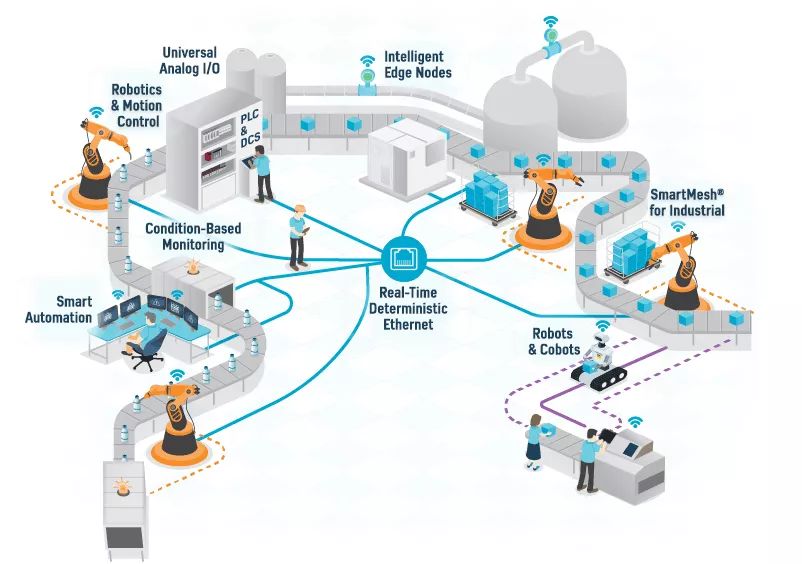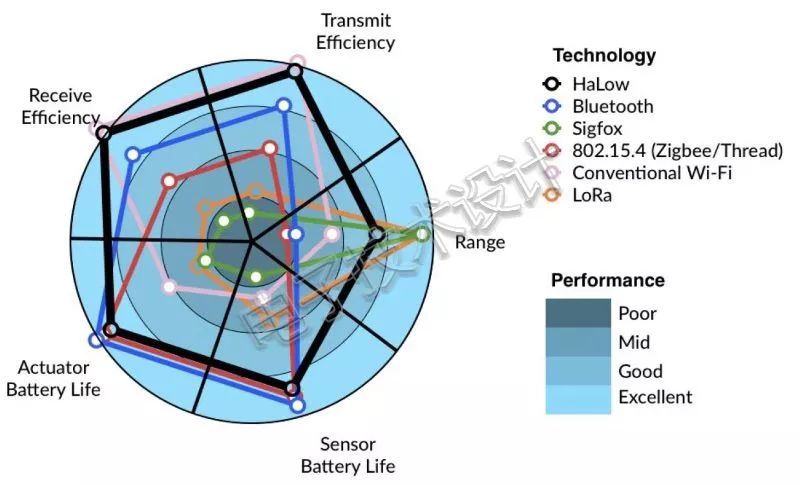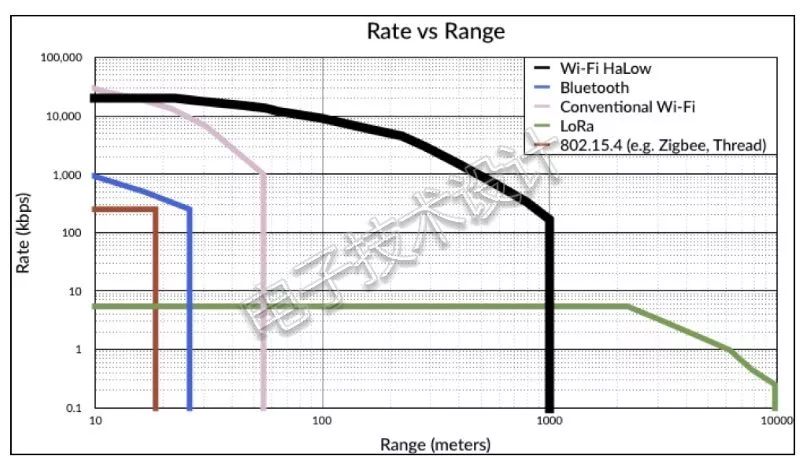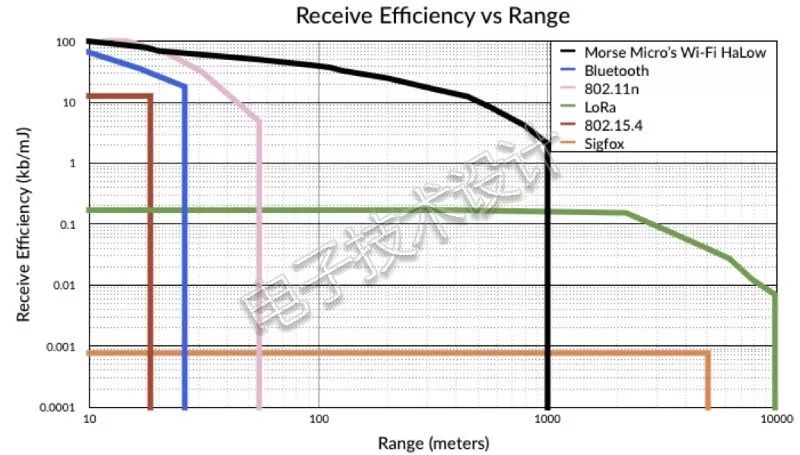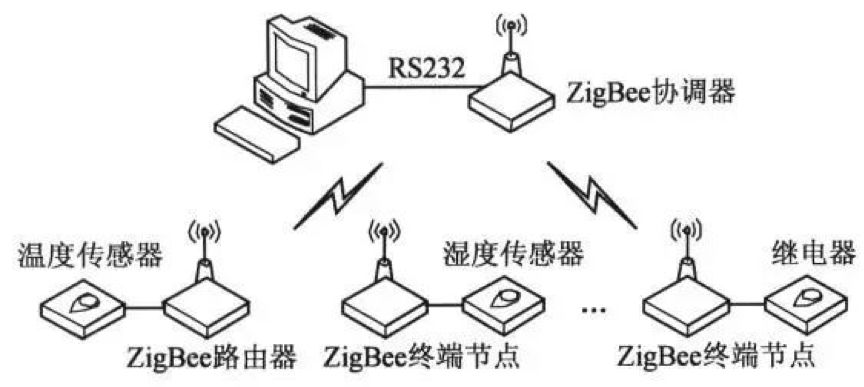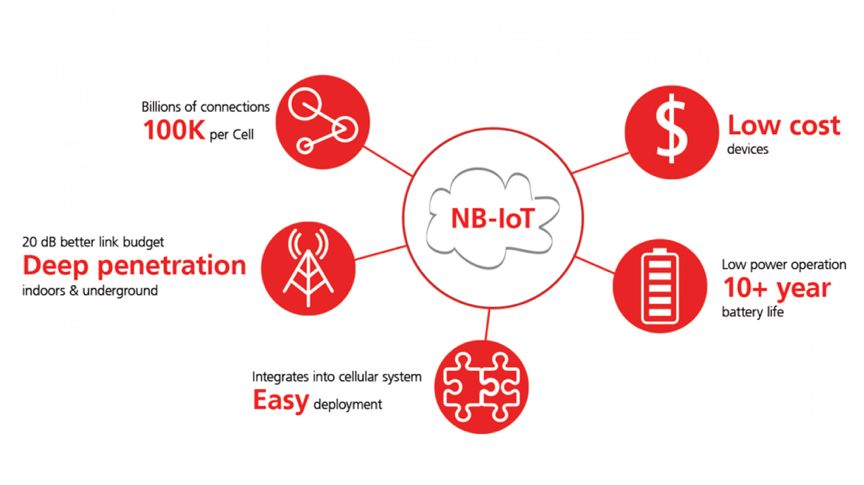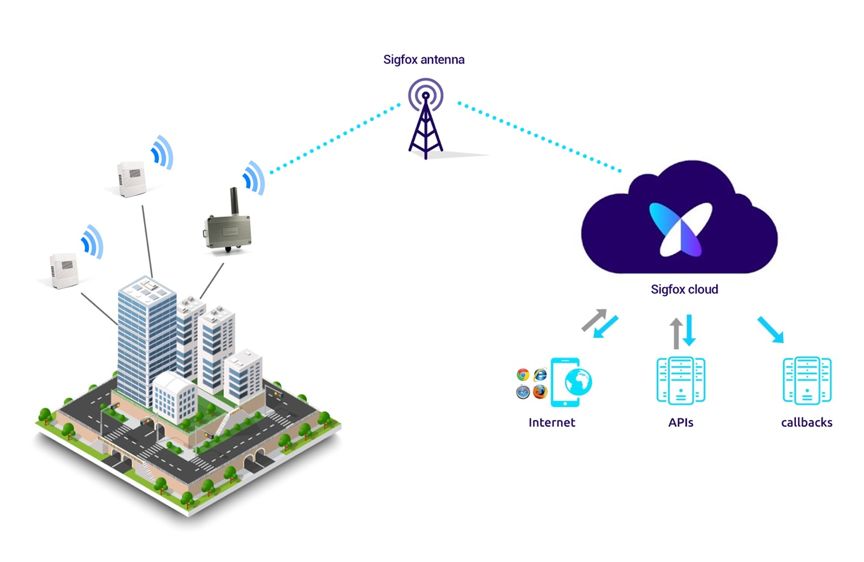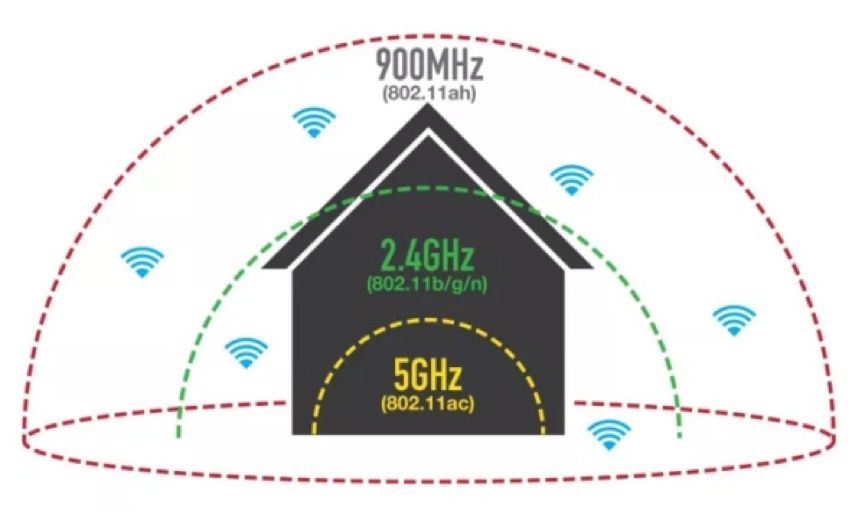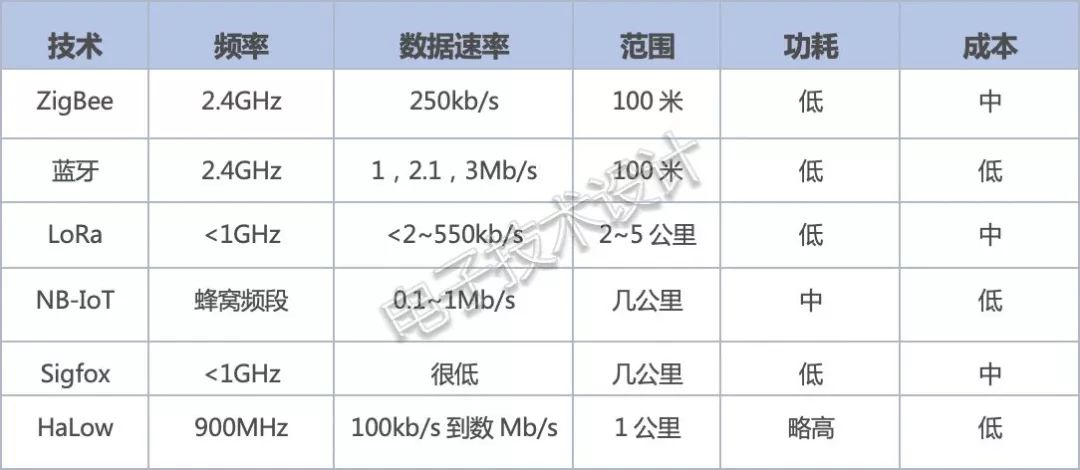↑ Click on the above
“Smart Manufacturing Home”
Follow us
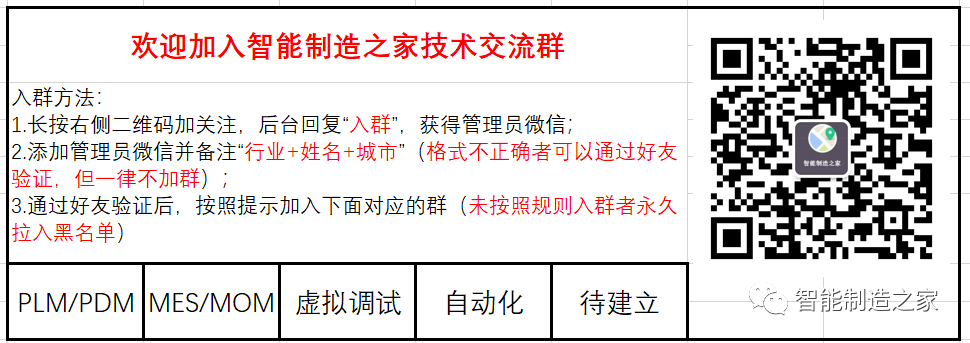
Previously, we introduced various IoT platforms:
Predix, Mindsphere, Thingworx….. A comprehensive overview of IoT PaaS platforms
We also discussed the architecture, key technologies, and applications of industrial IoT:
Architecture, Key Technologies, and Applications of Industrial IoT
Today, let’s talk about wireless communication technologies:
The wireless communication technologies in industrial IoT can be mainly divided into two categories:
One category includes short-range communication technologies like ZigBee, WiFi, and Bluetooth;
The other category includes low-power wide-area network communication technologies like LoRa, SigFox, and NB-IoT.
Different wireless technologies have various differences in networking, power consumption, communication distance, and security, thus having different applicable scenarios. This article compares these wireless technologies.
In large-scale production scenarios involving numerous devices, production application systems, workers, and products, a stable, high-speed, and easily managed wireless network is an essential requirement.
The wireless communication technologies in industrial IoT can be mainly divided into two categories: one category includes short-range communication technologies like ZigBee, WiFi, and Bluetooth; the other category is LPWAN (low-power Wide-Area Network), which refers to low-power wide-area network communication technologies. LPWAN is further divided into two categories: one operates in unlicensed spectrum such as LoRa and SigFox; the other operates in licensed spectrum, including 3GPP-supported 2/3/4G cellular communication technologies like EC-GSM, LTE Cat-M, and NB-IoT.
Different wireless technologies have various differences in networking, power consumption, communication distance, and security, thus having different applicable scenarios. For example, Sub-1GHz technology is suitable for applications requiring long transmission distances, battery power, and robustness; Bluetooth is suitable for high-speed, transferring more information, and mobile control situations; technologies like Thread and Wi-Fi also have their own advantages and applicable contexts.
Wireless Connections in Industrial 4.0 Application Scenarios
It is worth noting that new wireless technology standards are continuously emerging. For instance, as an extension and complement to traditional WiFi technology, Wi-Fi HaLow provides a unique combination of secure, long-range, low-power, and highly optimized wireless connections, greatly enhancing the management efficiency of factory automation.
Comparison of Different Wireless Technologies in Industrial IoT
Transmission Rates and Distances of Different Wireless Technologies in Industrial IoT
Reception Efficiency and Distances of Different Wireless Technologies in Industrial IoT
Below are the most common wireless technologies in industrial IoT:
ZigBee, Bluetooth, LoRa, NB-IoT, Sigfox, and the latest WiFi HaLow technology.
ZigBee was officially proposed in 2003 to address the high complexity, high power consumption, short distance, and small networking scale of Bluetooth communication protocols. The name comes from bees, which communicate the location of pollen to their companions through flight and the “buzzing” (zig) dance, forming a communication network within the group.
ZigBee can operate in three frequency bands: 868MHz~868.6MHz, 902MHz~928MHz, and 2.4GHz~2.4835GHz, with the last band being globally universal, consisting of 16 channels, and is a free, no-application-required radio frequency band. The transmission rates for the three bands are 20kbps, 40kbps, and 250kbps, respectively.
ZigBee is a low-cost, low-power, low-power short-range wireless communication standard designed for low-speed sensor and control networks, with the following characteristics:
Low Power Consumption: Due to its low transmission speed and a transmission power of only 1mW, coupled with sleep mode, ZigBee devices are very energy-efficient. It is estimated that ZigBee devices can operate for 6 months to 2 years on just two AA batteries, unmatched by other wireless devices.
Low Cost:The initial cost of ZigBee modules is around $6, which is expected to drop to $1.5-$2.5 soon, and the ZigBee protocol incurs no patent fees.
Low Complexity:The size of the ZigBee protocol is generally between 4-32KB, while Bluetooth and WiFi protocols usually exceed 100KB.
Short Latency:The communication latency and the latency from sleep mode activation are very short, with a typical device search latency of 30ms, a sleep activation latency of 15ms, and an active device channel access latency of 15ms. Therefore, ZigBee technology is suitable for wireless control applications that require stringent latency, such as industrial control scenarios.
Large Network Capacity:A star-structured ZigBee network can accommodate up to 254 slave devices and one master device, with a maximum of 100 ZigBee networks existing simultaneously in one area, and a single network can connect up to 65,000 nodes, allowing flexible network composition.
Reliability:It adopts a collision avoidance strategy, reserving dedicated time slots for communication services requiring fixed bandwidth, avoiding competition and conflicts in data transmission. The MAC layer uses a fully acknowledged data transmission mode, requiring confirmation information from the receiver for each sent data packet. If an issue occurs during transmission, it can be retransmitted.
Security:ZigBee provides a data integrity check function based on cyclic redundancy check (CRC), supports authentication and verification, and uses AES-128 encryption algorithm, allowing each application to flexibly determine its security attributes.
Although ZigBee has advantages such as low power consumption, low cost, low speed, high capacity, and long battery life, it also has drawbacks, including poor anti-interference capability, short communication distance, and the ZigBee protocol is not open-source.
Bluetooth technology originated in 1994, developed by telecommunications giant Ericsson, and is the simplest and most convenient method for wireless short-distance communication between two devices, enabling short-distance data exchange between fixed devices, mobile devices, and personal area networks. Bluetooth technology is widely used in mobile devices like smartphones and PDAs, PCs, GPS devices, and many wireless peripherals (Bluetooth headsets, Bluetooth keyboards, etc.).
Bluetooth uses frequency hopping technology, operating in the 2.402GHz~2.480GHz communication band. To date, it has been updated to 10 versions: Bluetooth 1.0/1.1/1.2/2.0/2.1/3.0/4.0/4.1/4.2/5.0, with communication ranges extending from a few meters to hundreds of meters.
Compared to previous versions, especially Bluetooth 4.2 or older, Bluetooth 5.0 features:
Faster Transmission Speed: The speed limit is 2Mbps, double that of the previous 4.2 LE version.
Longer Effective Distance: The effective distance is four times that of the previous version. Theoretically, the effective working distance between Bluetooth transmitting and receiving devices can reach 300 meters.
Navigation Functionality: Added more navigation features, which can be used as indoor navigation beacons or similar positioning devices, achieving indoor positioning accuracy of less than 1 meter when combined with WiFi.
More Transmission Functions: Increased data transmission functions, enabling hardware manufacturers to create more complex connection systems through Bluetooth 5.0, such as Beacons or location services.
Lower Power Consumption: Significantly reduces power consumption, alleviating concerns about standby time while using Bluetooth.
The biggest advantage of Bluetooth technology is that it does not rely on external networks, offers fast speed, low power consumption, and high security. As long as there is a smartphone and smart device, a stable connection can be maintained, allowing connectivity wherever you go. However, its disadvantages include the inability to connect directly to the cloud, relatively slow transmission speeds, weak networking capabilities, and fewer network nodes, making it unsuitable for multi-point deployment.
LoRa is a long-distance, low-power wireless transmission solution developed and promoted by the American company Semtech, providing users with a simple system capable of achieving long distances, long battery life, and large capacity, thus extending sensor networks. Currently, LoRa mainly operates in globally free frequency bands, with working frequencies of 915MHz in the US, 868MHz in Europe, and 433MHz in Asia. Its typical range is from 2km to 5km, with the longest distance reaching 15km, depending on the location and antenna characteristics.
LoRa Technology Features:
Low Power Consumption:Communication distances can reach 15 kilometers, with receiving currents of only 10mA and sleep currents of 200nA, extending battery life.
Large Capacity:In densely built urban environments, coverage can reach around 2 kilometers, while in less dense suburban areas, coverage can reach up to 10 kilometers.
Support for Distance Measurement and Positioning:Distance measurement with LoRa is based on the signal’s air transmission time, while positioning is based on the time difference of spatial transmission from multiple points (gateways) to one point (node), with positioning accuracy reaching 5m (assuming a range of 10km).
Therefore, LoRa technology is very suitable for IoT applications requiring low power consumption, long distances, numerous connections, and positioning tracking, such as smart parking, vehicle tracking, smart industry, smart cities, and smart communities.
LoRa’s drawbacks include slow transmission rates, communication frequency bands susceptible to interference, chip supply monopolized by Semtech, longer development cycles at the bottom layer, and a complex self-organizing network mechanism. Therefore, companies generally prefer to buy modules for direct use rather than researching LoRa technology.
NB-IoT (Narrowband IoT) technology originated from a British startup Neul (acquired by Huawei in 2014), focusing on the low-power wide-coverage IoT market.
Unlike standard LTE using the entire 10MHz or 20MHz bandwidth, NB-IoT uses a resource block of 180kHz wide, containing 12 sub-carriers of 15kHz each, with data rates ranging from 100kb/s to 1Mb/s.
NB-IoT uses licensed frequency bands and can be deployed in-band, guard band, or standalone carrier, coexisting with existing networks.
As a technology applied to low-speed rate services, NB-IoT has several advantages:
Low Power Consumption:NB-IoT sacrifices speed for lower power consumption. By adopting simplified protocols and more suitable designs, it significantly enhances terminal standby time, with some NB terminals claiming standby times of up to 10 years!
Low Cost:Compared to LoRa, NB-IoT does not require a new network; RF and antennas can generally be reused. Low-speed, low-power, and low-bandwidth also provide cost advantages for NB-IoT chips and modules, with module prices not exceeding $5.
Massive Connections:In the case of the same base station, NB-IoT can provide 50-100 times more access than existing wireless technologies. A single sector can support 100,000 connections, supporting low latency sensitivity, ultra-low device costs, low device power consumption, and optimized network architecture.
Wide Coverage:NB-IoT has strong indoor coverage capabilities, gaining 20dB over existing networks in the same frequency band, equivalent to increasing coverage area capability by 100 times.
Although NB-IoT has many advantages, issues such as low-speed data transmission, privacy and security concerns, and IT system transition times may limit its development.
Sigfox originates from the French company Sigfox, which builds a wireless network using ultra-narrowband (UNB) technology, serving as both a wireless technology and a network service.
Sigfox operates in the 868MHz and 902MHz ISM frequency bands, consuming very narrow bandwidth and power.
Sigfox radio devices use a technology called ultra-narrowband (UNB) modulation, occasionally transmitting short messages at low data rates, with the longest message being 12 bytes, and a node can send a maximum of 140 messages per day. Due to its narrow bandwidth and short messages, it can achieve long transmission distances of several kilometers in addition to its 162dB link budget. Sigfox is an excellent choice for burst applications that only require infrequent small data transmissions.
However, Sigfox’s drawbacks include severely limited downlink capability for sending data back to sensors/devices and potential signal interference issues.
Unstable connections, low efficiency, and sporadic periods have always been headaches for WiFi technology.
HaLow is a new version of WiFi suitable for industrial IoT applications, codenamed 802.11ah, enabling WiFi to be applied in more areas, such as small-sized, battery-powered wearable devices, as well as deployments within industrial facilities and applications in between.
HaLow operates in the 900MHz band, lower than the current 2.4GHz and 5GHz bands of WiFi, making it more suitable for small data loads and low-power devices. In the US, it uses the unlicensed band from 902MHz to 928MHz, while other countries use similar bands below 1GHz. Although most WiFi devices can achieve a maximum coverage range of only 100m under ideal conditions, HaLow can reach up to 1km with the right antenna, providing stronger signals and less susceptibility to interference. HaLow claims to have double the transmission distance of standard 2.4GHz WiFi, with better wall penetration capabilities.
HaLow is not suitable for fast data transmission or web browsing (which does not significantly affect IoT devices). Additionally, the 900MHz band is unlicensed and susceptible to interference.
Comparison of Wireless Technology Parameters in Industrial IoT
Which Technology Will Prevail?
According to the latest report from market research firm IHS Markit, in the low-power wide-area network wireless technology sector, LoRa and NB-IoT are leading by a significant margin, with LTE-M version of 4G cellular technology in third place, followed closely by Sigfox.
IHS Markit predicts that by 2023, NB-IoT and LoRa are expected to account for 86% of all LPWAN links, and 2023 will be a competitive year for these two technologies, with more private networks adopting LoRa, while NB-IoT will mainly be applied in public networks.
It is worth mentioning that Huawei’s HiSilicon is currently the leading supplier of NB-IoT chips, with 90% deployed in China; the second largest supplier is Taiwan’s MediaTek, and the third is China’s Unisoc.
On the other hand, Sigfox primarily relies on support from a venture capital firm to become a global IoT operator and maintain proprietary technology. IHS Markit’s survey report indicates that in 2017, Sigfox’s shipment volume was less than 9,000 modules, ranking third in market share, far behind LoRa and NB-IoT. IHS Markit predicts that Sigfox’s annual sales could grow tenfold by 2021, but it will still lag behind LoRa and NB-IoT.
Meanwhile, the Bluetooth Alliance and Wi-Fi Alliance have also made their moves. The enhanced signal coverage of Bluetooth 5.0 claims to cover an entire apartment, comparable to the data transmission distance of home WiFi routers. HaLow combines the advantages of previous WiFi technology and Bluetooth.
In industrial IoT, customer demands are diverse and rich, and a single technology cannot solve all customer problems. Different wireless technologies compete with each other while complementing each other because the future of industrial IoT cannot be dominated by a single communication technology.
Source: Electronic Technology Design
Disclaimer: The articles published by this public account are either original or compiled and edited based on online searches. The copyright of the articles belongs to the original author. Due to numerous reprints, it is impossible to find the true source. If there is a misattribution, or if there are any infringements regarding the images, materials, download links, etc. used in the article, please contact us for negotiation or deletion, thank you!
Comprehensive Interpretation of Siemens MES/MOM Platform Opcenter, A Digitalization Journey Worth Over 10 Billion USD
When Schneider PLC Meets Amazon AWS IoT, The Digitalization Journey of Automation Engineers
When Raspberry Pi + S7-1500 Meets Alibaba Cloud Across Borders – The Digitalization Journey of Automation Engineers
Simulation and Virtual Debugging at the Equipment Level, Unit Level, Production Line, and Factory Level in Digital Factories..
Siemens Industrial Technology Forum Allegedly Attacked, The Official Forum of the Domestic Industrial Control Giant Nearly Fell…
Siemens and SAP Strategic Cooperation, Digital Collaboration of Industrial Software Giants’ ERP and PLM
Detailed Explanation of Data Transmission Between ERP Systems and MES Systems
After Acquiring Two Companies in a Month, Siemens Continues to Invest in Industrial Software, The Giant’s Digitalization Determination
Application and Simulation Steps of Digital Simulation Software in Large Warehouse Logistics Automation Projects
Multiple Benefits!
If you have related materials on smart manufacturing needs, you can leave a message in the Smart Manufacturing Home community~
Enter the Knowledge PlanetSmart Manufacturing Home,Enhance self-awareness, Meet more friends, Gain more resources, More skills~

